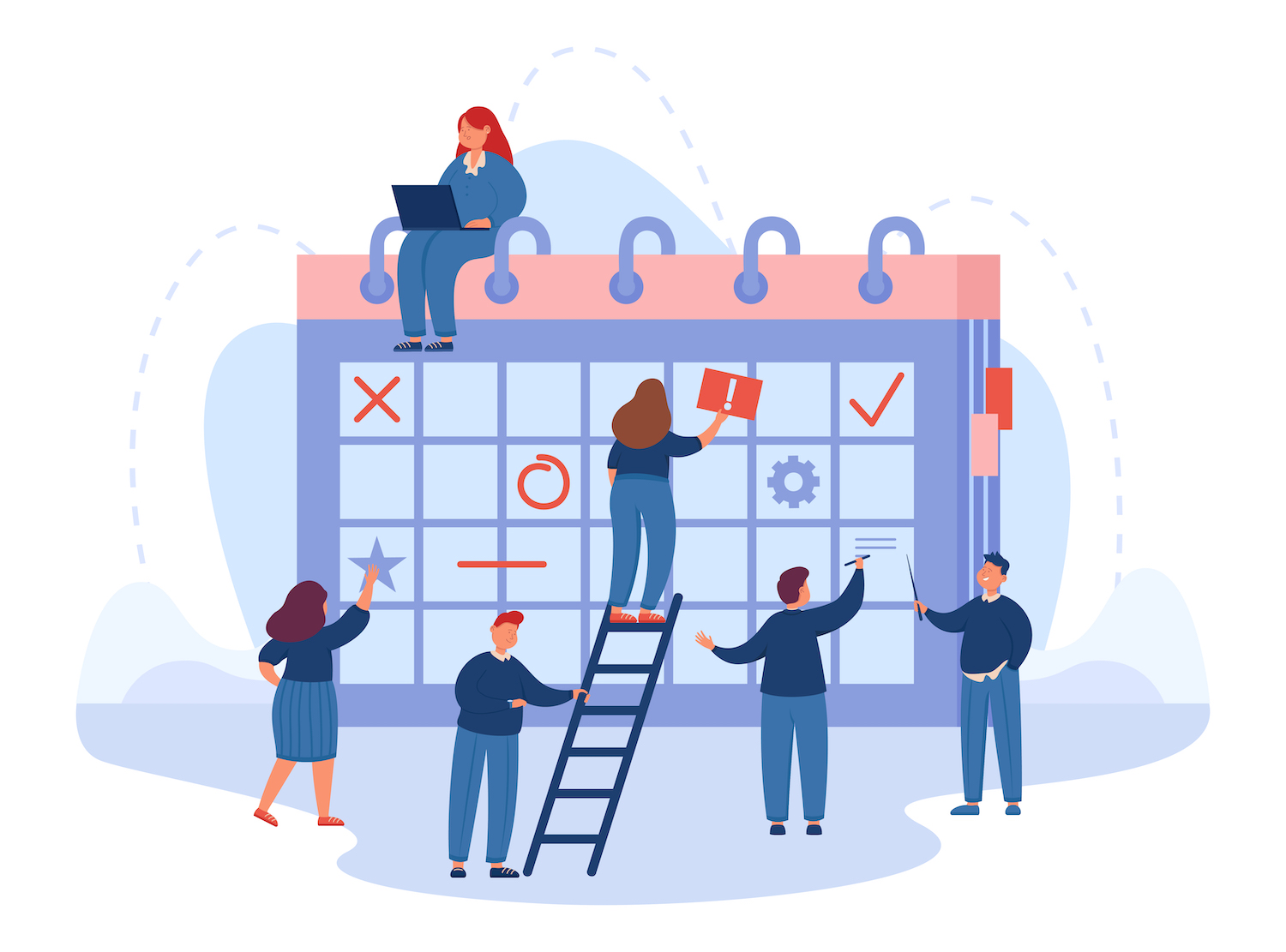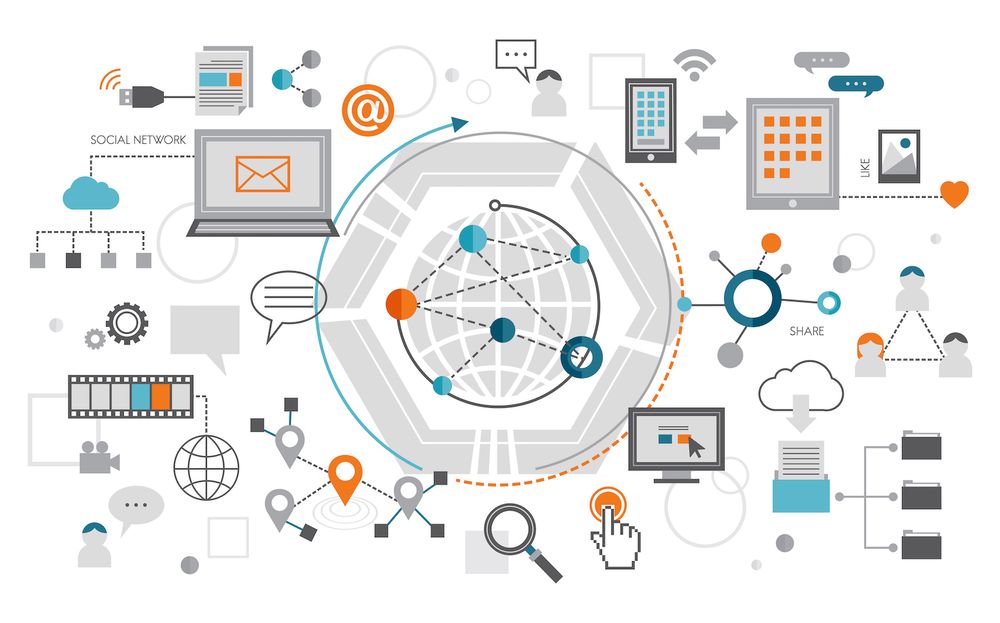E-Learning Gamification: Our Guide for 2024 |
Gamification is a thrilling procedure that blends the thrill of reward with the fun of playing. If you've always wanted to come up with new strategies to motivate your students Gamification can be a rewarding experience for them and for yourself. 87% of retail stores in North America are using or intend to employ gamification to reach clients. And the gamification industry is projected to be worth $62 billion in 2030.
By turning everyday activities in games can create new connections that support learning and longer retention.
In this post will cover:
- What is gamification in e-learning?
- Theories and models of gaming
- Methods to gamify your online course
- What can you do to succeed using gamification in e-learning

((toc))
What is e-learning and gamification?
Gamification is the use of game-like components, things like stories, levels, and even achievements in non-game contexts. For e-learning, this means using different components of gaming within the virtual world. In essence gaming in e-learning is used to aid learning. Research shows that engaging your learners through games and other activities aids them in learning retain their knowledge, as well as take pleasure in the process of learning.
We'll get more into the matter below.
Just as there are a number of different games available, there are a ton of ways to make e-learning more gamified. The possibilities are endless! All it takes is some imagination, a little creativity, as well as direct links to the content.
Gamification of learning through e-learning
Here are a few advantages to using gaming in e-learning.
- Learners are more engaged
In a study in 2020, it was found that gamification helped students get more excited than conventional learning methods. One reason to this is the fact that it helps learners take more ownership over their own learning-improving self-efficacy and determination.
But group participation can also boost motivation-especially where learners are on a team. Many learners are drawn to cooperative games, commonly called "cooperative interactions." These could be activities like shared quests or challenges where students work in teams to gain an understanding of what winning looks like, working with others to demonstrate behavior.
Which is better for motivation-group learning or individual learning? Research suggests that it is dependent on the preferences of learners. Make sure you inquire with the students!

- Learners participate more
Gaming can boost engagement in your classes. An analysis from 2017 showed that gamification boosts students' behavioral as well as cognitive involvement and can make learning more enjoyable. Students were more responsive to online discussions that had badges, thumbs-ups or avatars, profiles for members as well as progress bars.
- Learners are taught more
Engagement is great, but what about retention? Do students actually remember anything that they have learned through gamification? Studies suggest that it improves retention as well!
In simple terms, gamification in your course will help students gain more knowledge. In a study in 2023, having things like quick feedback, points, and learners being able to see the progress they made in their learning led to higher retention.

Element of e-learning gaming
Gamification in your E-learning assists your learners through the addition of the following elements to your curriculum:
- Experiential learning
Experiential learning means learning through the experience. Simple enough, right? In giving learners the chance to experience directly the concepts they're studying, such as practicing equations or tying the concepts with activities that help them understand, you build a solid foundation for them to learn from. Gaming e-learning can be experiential since it allows learners to be directly engaged with the material by engaging with it through activities.
For example Google Expeditions is an online field trip service that lets teachers bring students along for some pretty incredible virtual adventures. Utilizing VR headsets VR headset, pupils can experience a museum in virtual reality as they explore history, observe the past, or conduct science-based experiments.

- Learn by asking questions
The game-based learning course you are creating provides the opportunity for students to become interested. When learners are able to have more questions and ask deeper ones about their course and begin to engage in a method of understanding more.
Learning through inquiry lets students take charge of their own learning. As an example, a stroll through a museum online could include an instruction like "find a piece that speaks to you and tell us what it is that you like about it." This can be open-ended and learner-driven, and lets students find what they're interested in.
Learning based on inquiry can be built within an course design We'll get to below.
- Self-efficacy
Self-efficacy refers to your confidence in your capabilities to do or accomplish some thing. Gamifying e-learning builds self-efficacy by giving learners a chance to learn, try and improve. Actively. The more you continue this process, the greater confidence in your students develop.
In particular, giving students the ability to design their own learning pathways can help boost self-efficacy. Numerous online learning platforms allow students build their own journeys, choosing from the courses which best suit their needs.

- Defined and accurately described objectives
It's difficult to participate in a game if you don't be aware of the rules. If you're gamifying your course via e-learning, you need clear, consistent rules for how learners take on the course and, more importantly, play the game connected to their learning.
Like, Prodigy is a math game for kids. Kids can play an RPG and challenge other players with math questions and climbing up the levels while making money in the game. Everyone is aware of the rules and objectives, which makes gameplay work.

- Collaboration
Collaboration is the key to making dreams work. You can build cooperation in your gamified online learning structure quickly. The creation of a cooperative gamified in e-learning assists learners in improving their learning and retention. Like we mentioned earlier, the type of games you choose to play, whether competitive or cooperative work best depends on your learners.
For instance, Minecraft education version has an educational game that lets students design and build virtual worlds with each other.

Even though Minecraft is designed for children co-operative games are a great fit also for adults. Imagine a training program for corporate employees that's a virtual escape room for IT security professionals as well as a points and level-based system for adult learning. They can be effective if they are implemented correctly. Collaboration improves the accountability and involvement.
- Continuous feedback
Gamified learning involves an ongoing process that lets learners know what they're learning. By receiving regular feedback, the learners can adapt and respond to their environment, which leads to deeper and more involved learning.
Imagine your Duolingo Owl. It's a symbol for language learning, and it's the ogre character who gives the student feedback about their progress, whether it's encouraging you to continue or asking you to repeat errors. If the feedback isn't gamified in your e-learning course, it must happen.

Gamification of learning through e-learning.
to get you thinking about how the e-learning experience gamification might look like in the future, here are a few examples:
- Mavis Beacon: One of the first e-learning games, Mavis Beacon taught users to type while racing through a race track.
- Duolingo: Duolingo has mastered gaming in the classroom, turning learning into a fun, virtual journey. From rewards and challenges to leaderboards, the Duolingo platform has become the benchmark for gamification of language.
- MathBingo: This is an app with a huge following for math and aids students to master math.
- Nike Run Club: A group of runners together to record their progress, keep each other encouraged and accountable, as well as share the progress. It is an experience that can be gamified when learning how to run.
- Trailhead is a game developed by Salesforce: A game that is interactive and e-learning to show people how to utilize Salesforce.
- LinkedIn Learning: It gamifies classes with completion badges, as well as tracking of products, as well as adding badges to the profile of your.
- : Create custom badges to be added to courses and recognize members' contributions or excellence.

What is gamified learning? not
Gamification is a term that has been applied to many different things, but it's important to establish the parameters of the definition of gamified e-learning. Gamification that is truly effective requires goals, clear mechanics for students, and the right rewards.
Although games are fun, including a gaming component won't make for a gamified learning course via e-learning.
Here are the things that you must have in order for your learning to truly be gamified.
- Gamification should be a part of the learning process that includes feedback on performance.
- Gamification should be linked to the course's goals.
- Gamified methods should be connected to the course material.
- Learners need some sort of reward to encourage their participating.
Knowing these rules helps to concentrate on what's actually e-learning gamification. And it helps you avoid distractions.

Methods of gamification(? )
Even though games have been around for a very long period of time, the concept of gamification as a method is relatively brand new. The concept of gamification itself is only beginning to develop. However, here are a few methods to consider it based on 2011 research that provides a good method to explain the gamification. The model is comprised of three elements.
1. Mechanical Engineering
Essentially, the mechanics are what learners 'do' while playing your e-learning course. These are the rules of how learners participate in the game and what they earn. For example, if an app for fitness uses the leaderboard in a fitness-related program for personal use, it needs to clearly define how points are earned and how they are used consistently.
2. Dynamics
Dynamic behavior refers to the behaviors and actions that learners display in the gamified content of a course. Dynamic learning is the process that causes change in e-learning. Rules of play (mechanics) remain the same. But the actual dynamics and the learning experience of learners change constantly. If, for instance, an e-learning course has customized learning journeys, it is the same rules for every user. However, no two players will have the same experience of the game. Each will have their own experiences. Or, if members are working together in the context of a learning community in which everyone is involved each member's inputs could change each learning experience.

3. Aesthetics
The look and feel of gamified content matters! Paying attention to aesthetics helps make your content relevant. When you add fun and lightness to gamified material it creates new opportunities students can connect to you and your course. The creators of the typing game Mavis Beacon incorporated typing with an immersive dashboard of a race car- the car accelerated as you typed. It made the game more engaging than a simple typing test. Duolingo employs a cartoon owl along with a lot of hilarious animations to make learning more engaging.
Mechanics, dynamics, and aesthetics are crucial when you're gamifying your online course. As you use particular strategies to gamify your course such as leaderboards, or 'leveling up', take these factors into consideration. No matter your specific technique.
8 strategies for online learning Gamification
1. Use a leaderboard
Leaderboards are an essential component of gamification, which is monitoring progress. By sharing this information to your students, you help them see in real-time how they're performing.
The study of 2021 showed that using different types of leaderboards can keep learners interested and motivated. There are two kinds of leaderboards that gamify:
- Macro leaderboards are connected to general content as well as overall development.
- Micro Leaderboards The boards show your performance in specific areas or sub-groups within this course.
If you are using leaderboards, provide your students guidance about the best way to proceed and how they are being measured. One of the great things about leaderboards is that they allow you to also create micro leaderboards for non-learning activities. By doing so, you give learners multiple options to display their progress and build their motivation for engaging in specific content.
For inspiration on how to use leaderboards, go look at Salesforce's Trailhead Leaderboard. It shows the Trailblazers who are killing it with Salesforce's program.

2. Create contests
Contests can be a great opportunity to have healthy competition and collaboration. Students can team up or work solo in order to accomplish the contest's goals. Contests motivate students to interact to your subject with the hope of winning the prize of a lifetime.
It is possible to turn cooperation into a contest and encourage participants to aid each other in order to gain. You could, for instance, create an award system in which participants are able to indicate which one has helped their efforts to reach your goals.
Like the one above, HackerRank is dedicated to teaching developers new coding skills. They use different competitions and competitions, such as the DTCC Code-A-Thon, which pits developers from around the world against each other to solve coding questions and win cash prizes.
3. Develop a reward system
Rewards systems are common in gamification. The offering of rewards can increase the level of engagement by giving a nice reaction to the learner's behavior. Rewards let students know that they've successfully completed a assignment or task.
For instance, if you have supplemental materials for your learners to study and learn about, you can set up rewards based on your students' engagement with the materials.
4. Make an points system
Points systems can be another option that students can use to keep track of their improvement. This direct information lets the learners know precisely how they're doing. This means that you encourage learners to maintain and increase their engagement with your content.
As an example, Duolingo offers different points and gems to use regularly as well as daily log-ons or "streaks".
5. Help your learners 'level up'
A system of levels within your gamification program helps learners demonstrate what they know. Mastery and proficiency are the key words to use in the game. A learner's proficiency is the ability to prove they comprehend a concept. A learner's mastery refers to the ability to show deeper knowledge of the concept.
Think of it like being able to calculate 2+2=4 (proficiency) as well as knowing that two apples with two oranges constitute four fruits (mastery). Achieving higher levels will show a person who has a greater knowledge of concepts. This leads to their application in other contexts.
6. Make a system of badges
The badges allow learners to showcase their abilities to peers. If learners complete significant work, like creating discussion posts or engaging in discussions, giving them a badge will more than simply provide recognition. The badges also act as a way to remind students of students' progress by providing the required feedback in order for gaming to succeed.
The creation of badges is one the most essential rewards systems to encourage e-learning. In a Mighty Network you can create custom badges and bulk award these to participants in accordance with their achievements.
7. Let your learners design games!
Putting learning in the hands of your learners can be a successful approach for any class. If you allow your learners to take the reins to develop games that aid in learning process, you increase their autonomy and motivation within your course. Learners developing gamified e-learning themselves allow them to establish rules that are specific to their environment. They then can create useful methods of participation that correspond about what's important to the individual.
Go one step further by having learners test their methods on one another. Learners can figure out the best way to incorporate learning objectives to their game. They can also take lessons from other players as well as the gamification strategies they use. You not only improve their connections to the content by making them instructors. They also learn by transcribing the information into the form of a game.
Platforms like Roblox and Minecraft don't have the capacity to be a platform for learning online However, they're excellent examples of introducing design concepts to students. The builders can create the universes, and later create problems within their worlds. Even if you're not building something as complex as Roblox Find ways to make your learners more empowered.
8. Combine gamification strategies
You definitely don't have to stick to one method to make your online course more gamified. Find out what strategies work for you, for your students, and most importantly, for your students. Combining techniques, or employing various strategies throughout your class helps keep the course interesting for your students. When you create clear and consistent gamification strategies it is much more likely to maintain your students interested.
Perhaps your points system is helping in forming your leaderboard or perhaps you are using incentives to help level up' your learners. You can combine strategies that draw on your students' enthusiasm. Additionally, you offer them a variety of forms of feedback that can encourage them to participate in your course.
Tips for making e-learning gamification successful
For making your e-learning gaming an enjoyable and beneficial procedure, you should consider the following tips:
- Make sure that students are aware of the software
Research suggests that among the most important steps in designing e-learning gamification is to make sure learners know how to utilize your software for courses and participate in the games that you've created. If you don't have a clear understanding that they understand, it's all nothing. Avoid the temptation to over-gamify to learn how to design effective, easily understood games for anyone to play.
Be sure to talk with your students for confirmation that they are aware of the software or systems you use. When you do this, it helps students become more comfortable with the tools they'll require. It also helps build a relationship with your learners that fosters confidence and boosts motivation for them to take part in engaging in gamified e-learning.
Learn about your students
Gamification works best when designed to meet the needs of your students. It can be challenging to tailor every game, however, it's also beneficial. In particular, you need to determine what drives your students. Learners who have a focus on task may benefit when gamification is used more frequently than those who are focused on performance.
You can use tools like surveys to learn about the students you teach. Surveys can be a great technique to determine what your students are most interested in and disinterested about and their motivations. This information can be used in determining how to make your courses more gamified.
Variate your method
Using diverse methods in gamified e-learning helps engage more people. You can work with learners' natural motivations, and help them learn different ways of connecting to the material.
However, try to avoid using numerous strategies. Perhaps 2-3 different strategies will be enough. Many strategies can be detrimental to your students, or burden them with too much to adapt to. But mixing a few different methods that you are able to build on will be more helpful for keeping your course current and your students engaged.
• Encourage your students
The use of games can provide a brand new educational experience for your students. It depends on how much adaptation the students require, research has shown that encouragement is beneficial. Supporting students emotionally increases their enthusiasm. The effect carries over into their interaction not only by how you playfully gamify the course however, they also interact with other members of their learning community.
You can be encouraged!
If you are using gamification to enhance your class, offer yourself a boost. The concept of gamifying learning is modern. Though gamification may have been used for years however, the research behind it is barely more than 10 years older. The game is a brand new method of learning within a new environment for learning. When you're trying these methods, focus on your successes as well as learn from the challenges. If you can do this you improve your self-efficacy, just like gamifying your e-learning enhances your students' self-efficacy.
Conclusion
E-learning gamification creates rich opportunities for students to learn more about what they are learning. Incorporating game elements into your class can provide students with an experience that is more engaging and improves their performance.
Connecting gaming to your goals and grounding the students in collaborative interactions will not only help your students find success; you'll reap the benefits of seeing your learners develop through enjoyable experiences.
Try out these strategies on a Mighty Network to enhance your class and make awesome online learning experience!
